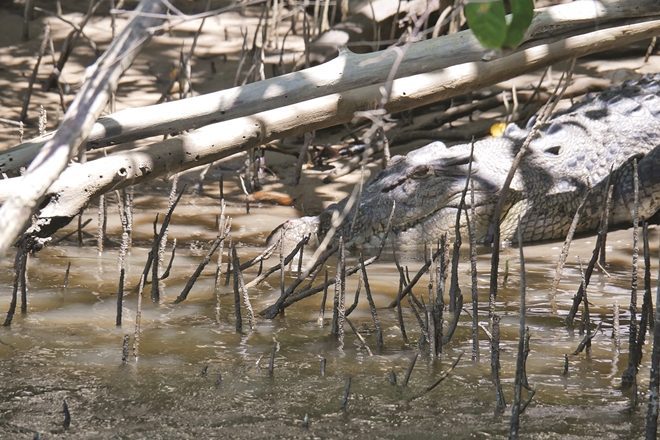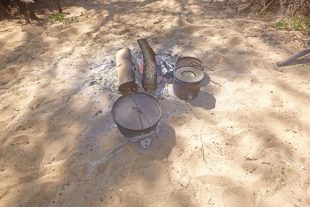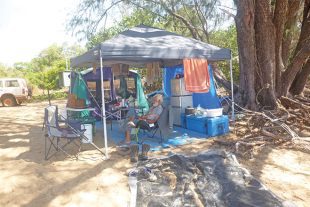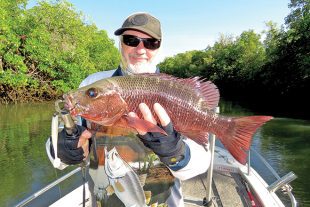
THE arrival of decent storms in October and November across much of the Cape signalled a likely early onset of the monsoon season – as predicted by the Bureau of Meteorology. Because the country is initially so dry at this time of year, the first runs in rivers and creeks are not usually sustained and levels drop over the following days.
However, during a La Niña event, storms are likely to be much more frequent and intense, something to be mindful of this year. Anyway, this month I thought to cover an animal that is on everyone’s minds when on the Cape – the estuarine crocodile.
A great deal of misinformation is out there and regrettably also a lack of respect for crocodiles in too many cases. It is notable that our estuarine crocodiles (or ‘salties’) are the world’s largest living reptile, growing to at least 7m and found around northern Australia as well as other parts of the Indo-Pacific region.
Interestingly, both of these names are inaccurate, as not only does the saltie thrive in estuarine and saltwater habitats but also in freshwater rivers and billabongs, often hundreds of kilometers from the sea. They can and do live and travel along the Cape York coastline, and occur around most islands of the region.
Even if you don’t see crocodiles along beaches, you will see their tracks in many places. Crocs often move between the sea and freshwater creeks (or soaks) slightly back from the beach, probably for a drink. These animals have lingual glands that rid their bodies of excess salt, however drinking freshwater may also help, though is not essential.
Crocodiles have a third pair of eyelids that act as swimming goggles for underwater vision and their bodies are beautifully streamlined for swimming with minimal disturbance, with the scutes on the back act as small solar panels. These collect heat from the sun and warm the blood, which is then transferred around the body.
When a crocodile basks on the bank with its jaws open, it is cooling its head. There are plenty of people around Australia who hold great knowledge of crocodiles, however in the late 1990s and early 2000s, Steve and Terri Irwin commenced indepth research into crocs, and that research continues today in collaboration with the University of Queensland.
In our early studies in Rinyirru National Park, we caught a number of crocodiles with callouses under their feet – slightly puzzling given they were living in very muddy estuaries. A couple were fitted with satellite trackers and it was found that the relevant crocodiles were often leaving the river and travelling across country for a kilometre or so to isolated swamps or waterholes.
Given the signs of pigs working over those particular water bodies, it’s likely the crocs were laying in ambush for a feast of fresh pork! Remarkable was that these reptiles apparently have the local landscape mapped in their brains. They were not wandering about looking for a waterhole but went straight to it.
We also discovered that with the exceptional navigational and homing instincts of crocodiles, relocating problem animals didn’t work. Two crocs we had moved by helicopter out of the Wenlock River over a hundred kilometres away, returned unerringly back home. The most remarkable example though is of the 14’ long crocodile called ‘Weldon’.
Weldon was lifted from the Wenlock River on the west side of the Cape to Temple Bay on the east, fitted with a satellite tracker and released. That big boy also made his way home, eventually swimming up to the tip, down the west coast and back up the Wenlock to exactly where he was caught!
The ongoing research between UQ and Australia Zoo in the Wenlock has since revealed that crocodiles use tidal flows and current to help them travel and save energy, they can stay underwater for at least three hours, and that large male crocodiles may have either an identifiable home range or are nomads and continually move about.
The latter behaviour is particularly apparent with males around the 10-12’ mark. You can go to the Australia Zoo website to follow the movements of individual crocodiles and the other amazing discoveries – it is well worthwhile! There is plenty to discover about these remarkable reptiles, including how they keep their ecosystems healthy and balanced – as they do.
In my long experience, a body of water that offers great fishing always has a healthy population of crocodiles – the two go hand in hand. Until next month, stay safe and enjoy the magical Australian outdoors!
 Bush 'n Beach Fishing Magazine Location reports & tips for fishing, boating, camping, kayaking, 4WDing in Queensland and Northern NSW
Bush 'n Beach Fishing Magazine Location reports & tips for fishing, boating, camping, kayaking, 4WDing in Queensland and Northern NSW








